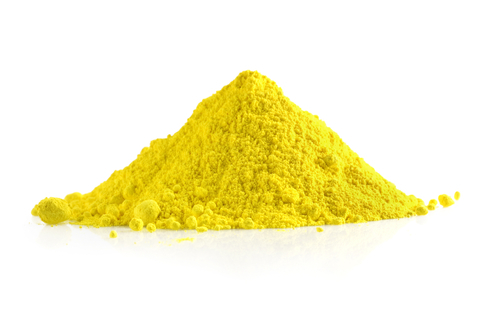First, the vehicle detector installation:
Intelligent vehicle detectors must be installed in a waterproof, moisture-proof and dry environment as close to the detection coil as possible. The good operation of the detector depends to a large extent on the detection coil to which it is connected. Several important parameters of the coil include: coil shape, size, number of turns, embedding method, and the like. (See "Test coil installation guide" later)
Second, the use of vehicle detectors:
After power is turned on, the detector will self-test. The self-test procedure takes about 3 seconds. When the self-test passes, the green indicator light turns from blinking to extinguishing. During the self-test, the detection coil is preferably empty (it should not be parked on it). After the self-test of the vehicle detector is successful, when there is a car passing through the coil, the green indicator light is on and the corresponding output relay is actuated (the output mode and delay time of the relay are shown in the following diagram). If the detector does not respond, adjust the panel's sensitivity setting switch.
1, vehicle detector sensitivity adjustment:
Sensitivity adjustment uses the “Sens.†toggle switch on the upper panel. There are three levels, “L†is the lowest, and “H†is the highest.
2, vehicle detector operating frequency settings:
There are two choices (set by internal DIP switch SW1, 3, 4 set ON to lower frequency and OFF to higher frequency). The factory default setting is low frequency. Only when the two detection coils are placed close together, there is a need for adjustment when there is "crosstalk."
3, the use of reset:
The sens.1 H and M shifts are reset. The factory default setting - the first position of the DIP switch is OFF and the second position of the DIP switch is OFF.
Our products are exported to more than 20 countries and win good praise and reputation among customers who come from Middle East, Asia, South America and Europe. We have rich experience in producing and are highly qualified to produce different types of AC blowing agents. Besides, we have professional team to answer your questions at any time.
Azodicarbonamide appears as an orange to yellowish crystalline powder, the color of which depends on the particle size. The specific gravity is 1.65, the specific heat capacity is 1.08784j g-1 k-1, the decomposition temperature is 205-215 °c (visual measurement of melting point tube) , non-toxic, odorless, excellent storage stability, self-rest in case of fire and non-combustion. ADC is the most economical and widely used organic chemical blowing agent among all industrial blowing agents. POROFOR ADC is mainly used in the production of closed-cell foamed products because of its good dispersibility, large volume of gas and non-toxic, tasteless and non-polluting decomposition products, the application field of ADC is greatly expanded.

Characteristics
1. Gas Production Efficiency is high. The product has high purity, high gas yield, high performance-price ratio, and belongs to high efficiency foaming agent.
2. Stable quality. The production device has high automation degree, stable product quality, reduce waste, and is especially suitable for use in products with high quality requirements of foaming agent.
3. Complete specs. The product has a particle size range of 3-15 microns and is suitable for a wide range of foaming applications. Five kinds of products with different particle sizes are selected, which can be used directly or modified further to enlarge the application range. L-C2 and M-C1 are especially suitable for low processing temperature or high foaming efficiency when used together with activator.
4. Good dispersion. Products bubble hole fine, uniform; products feel good, beautiful appearance.
5. Use it well. The solid residue after decomposition is colorless, tasteless and pollution-free, and does not affect the appearance and performance of the product.
6. Low dust. LANXESS's proprietary technology, which reduces fly ash, helps improve the user's operating environment.
7. Non-toxic. Permitted in products that come into contact with food.
Specifications
|
Indicators Model No. |
L-C2 |
M-C1 |
S-C2 |
VPSP |
F-C2 |
|
Appearance |
Yellow powder |
Yellow powder |
Yellow powder |
Yellow powder |
Yellow powder |
|
Particle size D50 um |
2.6-3.4 |
3.3-4.5 |
5.7-7.7 |
9.5-11.9 |
13.4-16.4 |
|
Gas Emission ml/g≥ |
220 |
220 |
220 |
220 |
220 |
|
Decomposition temperature ℃≥ |
200 |
200 |
200 |
200 |
200 |
|
Purity %≥ |
97 |
97 |
97 |
97 |
97 |
|
Sieve residue %≤ |
0.05 |
0.05 |
0.05 |
0.05 |
0.05 |
|
Heating decrement %≤ |
0.15 |
0.15 |
0.15 |
0.15 |
0.15 |
|
Ash Content %≤ |
0.10 |
0.10 |
0.10 |
0.10 |
0.10 |
|
PH |
6.5-7.5 |
6.5-7.5 |
6.5-7.5 |
6.5-7.5 |
6.5-7.5 |
|
Other models can be manufactured by negotiation |
|||||
Other related items of our company:
1. Hydrazine Hydrate
2. Azodicarbonamide
3. 2-Aminophenol
4. Ferric Chloride Anhydrous
5. Betaine Hydrochloride
exposure to azodicarbonamide,effects of eating azodicarbonamide,hydro azodicarbonamide,how is azodicarbonamide made,hs code azodicarbonamide,azodicarbonamide foaming agent
Jinan Forever Chemical Co., Ltd. , https://www.jinanforever.com